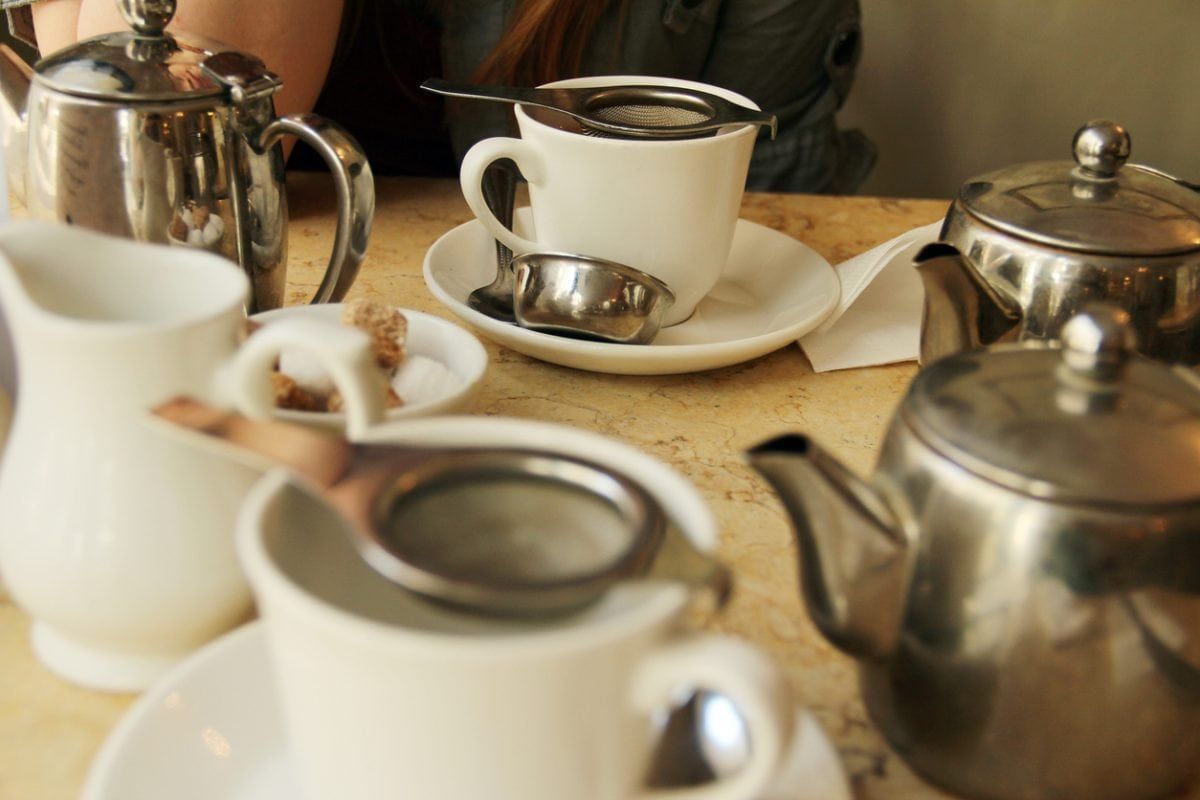
The proper way of drinking tea
Move over coffee aficionados. You’ve had your run of things for way too long. It’s high time the tea brigade evened things up a little. I’m not saying we can’t share the love, but with a coffee shop on every street corner, the inequality is killing me. It’s high time the high street made room for tea.
Now, if I could guarantee a decent cup of tea from a barista I’d keep schtum. But, how many more crappy cups of tea do I have to endure in a coffee mug? Don’t get me wrong. I appreciate the art of good coffee making. But, come on, shouldn’t the same principles, acre and attention apply to tea?
I’m super surprised there hasn’t been more of a backlash amongst tea drinkers. According to the UK Tea & Infusions Association, us Brits drink way more tea than coffee. Apparently, as a nation, we drink 70 million cups of coffee per day. But pfff to that. Tea tops the bill, with around 165 million cups of tea being drunk daily in the UK. So, how come coffee shops have taken over the high street and not tea bars?
The simple cost of a cuppa
It’s more than likely it’s our simple view of tea as a cheap hot beverage that prevents us from paying through the nose for it in a café. At home all we need is hot water from a kettle and a 3 pence tea bag. Coffee on the other hand requires gadgets and gizmos to roast, toast, grind and brew the best tasting coffee in town (or so most coffee shops would have you believe).
Quite simply, folk are prepared to put their hands in their pockets for a freshly ground Mocha Smocha skinny, almond milk inflicted coffee, but not for a simple cup of tea.
The art of teamaking (and why coffee shops are getting it wrong)
Tea connoisseurs will now that perfect teamaking is reliant on 5 factors:
One last point on perfect tea comes down to the quality of the cup you are drinking it from. The wrong type of cup can literally ruin your tea drinking experience. Thin-lipped porcelain is king when it comes to tea cups. Most coffee shops shove a tea bag in a cup perfect for coffee. Said cup is definitely not an appropriate vessel for tea.
The future is tea
If you are with me on the tea shop inequality, you’ll be pleased to hear there’s a glimmer of hope on the horizon. Food and drink trends in the US usually wing their way to our shores, and tea bars are popping up all over the US. The trend hasn’t caught on in the UK in the past because we’ve been stuck in our ways about getting our tea fix at home.
Well, change is in the air. According to worldwide packaging solution experts, The Bag Broker, there has been a rise in customers buying fancy custom-printed packaging for teas. Our relationship with the traditional builder’s cuppa may be waning, but younger generations are driving the market for trendy herbal infusions. There has never been a better time for tea bars to take off.
There’s been an explosion of interest in the fermented drink kombucha in recent years (kombucha is a fermented tea renowned for its health-giving properties). Europe’s first kombucha tap room can be found in Hackney, London. Kombucha is proving a popular alternative to alcohol. In the US the kombucha market is predicted to be worth $1.8 billion this year.
If predictions are anything to go by, the future is tea. Shout from the rooftops, afternoon tea is making a comeback.